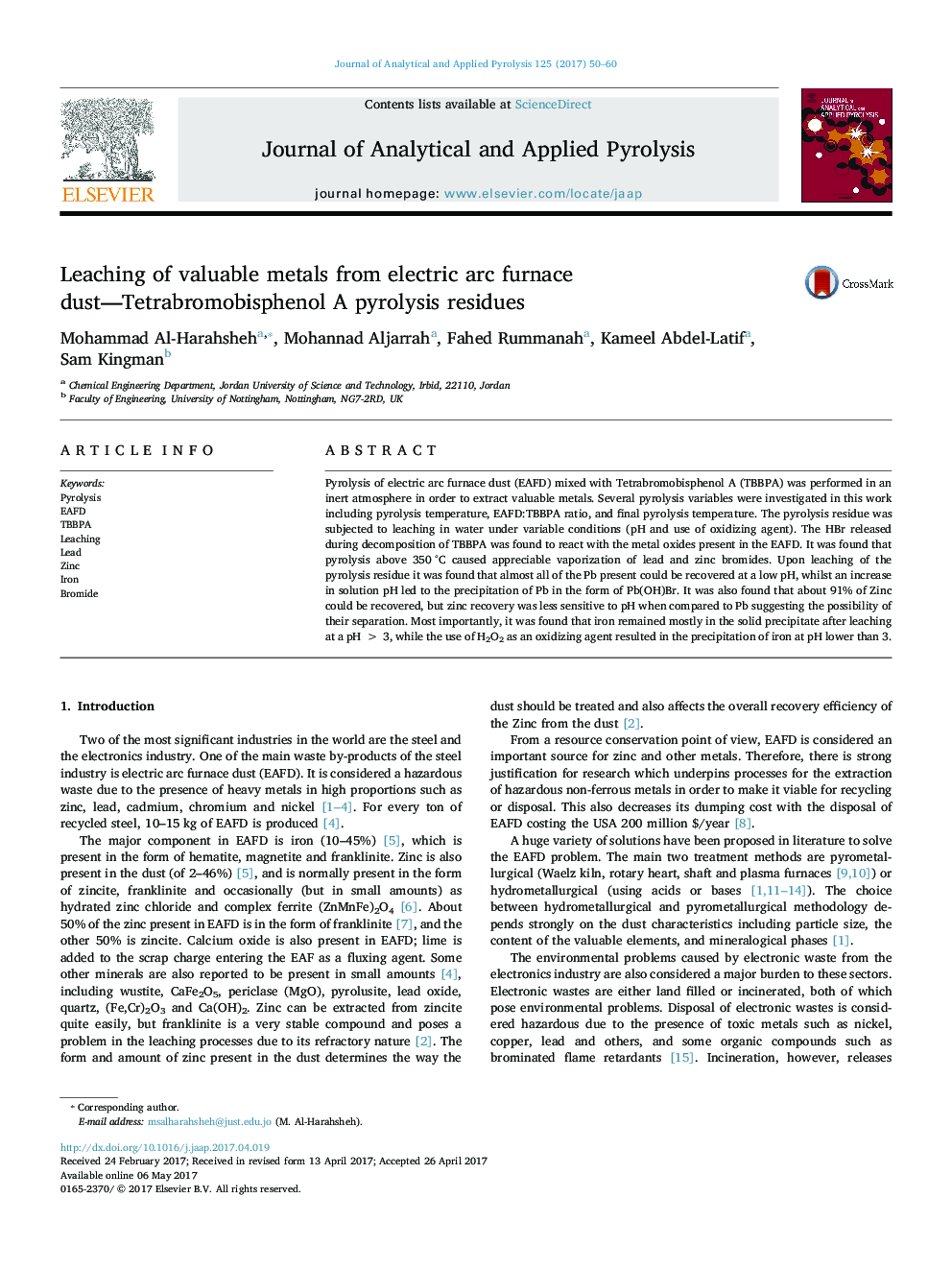| کد مقاله | کد نشریه | سال انتشار | مقاله انگلیسی | نسخه تمام متن |
|---|---|---|---|---|
| 5134477 | 1492952 | 2017 | 11 صفحه PDF | دانلود رایگان |

- Pyrolysis of two wastes (EAFD and TBBPA) mixture at moderate temperature followed by water leaching is presented.
- pH plays an important role in the dissolution of metal values from the pyrolysis residue of the two wastes.
- Pyrolysis above 350 °C will cause both lead and zinc bromides to vaporize.
- High recoveries of Zn and Pb were obtained from the residue at room temperature in short time.
- Selective separation of Zn and Pb leaving most iron in the solid residue was achieved.
Pyrolysis of electric arc furnace dust (EAFD) mixed with Tetrabromobisphenol A (TBBPA) was performed in an inert atmosphere in order to extract valuable metals. Several pyrolysis variables were investigated in this work including pyrolysis temperature, EAFD:TBBPA ratio, and final pyrolysis temperature. The pyrolysis residue was subjected to leaching in water under variable conditions (pH and use of oxidizing agent). The HBr released during decomposition of TBBPA was found to react with the metal oxides present in the EAFD. It was found that pyrolysis above 350 °C caused appreciable vaporization of lead and zinc bromides. Upon leaching of the pyrolysis residue it was found that almost all of the Pb present could be recovered at a low pH, whilst an increase in solution pH led to the precipitation of Pb in the form of Pb(OH)Br. It was also found that about 91% of Zinc could be recovered, but zinc recovery was less sensitive to pH when compared to Pb suggesting the possibility of their separation. Most importantly, it was found that iron remained mostly in the solid precipitate after leaching at a pH > 3, while the use of H2O2 as an oxidizing agent resulted in the precipitation of iron at pH lower than 3.
Journal: Journal of Analytical and Applied Pyrolysis - Volume 125, May 2017, Pages 50-60